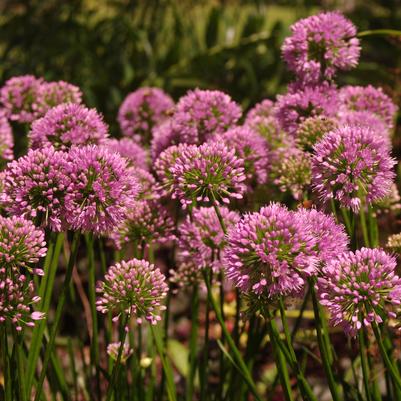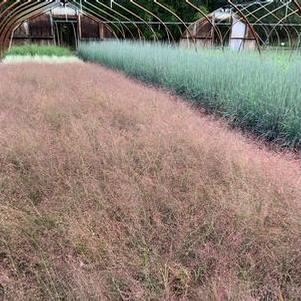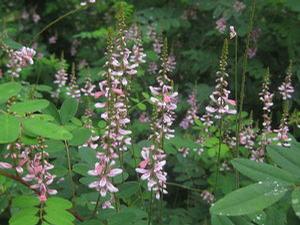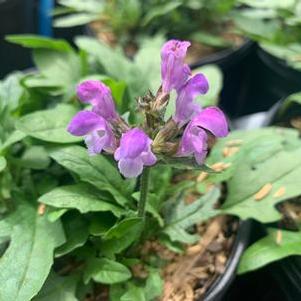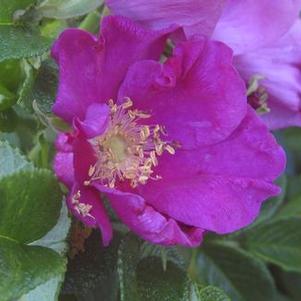Picturesque Pinks of Summer
This time of the year, yellows and pinks dominate the landscape. Carnation, flamingo, bubblegum, baby pastel, and Barbie-appropriate hues create a pattern of cohesive pink shades throughout the Nursery gardens and production houses. So, this week, we’re paying homage to only a handful of the poppy pink palettes that we offer, ranging across shapes, sizes and species.
How would we even get through summer without mentioning one of our Allium selections? Without a doubt, Allium x ‘Millenium’ has been making itself known for several weeks now, slowly unfurling its purple-pink pom-poms to full blown spiky-balls. It’s a favorite of the bees, too. Honey bees and sweat bees can be found busily collecting pollen and enjoying nectar from the showy inflorescences. This makes for a near-complete sensory experience between the stochastic hum of buzzing bees, the pleasant oniony aroma emanating from the Allium itself, and the outstanding visual of abundant pink blooms throughout the middle of summer.
If aggressively showy, fragrant blooms are not what you’re looking for, but instead you’re after a low-growing, warm-season grass with delicate inflorescences and a somewhat diminutive effect, Eragrostis spectabilis is the plant for you. Airy, unkempt panicles comprised of rosy pinkish purple inflorescences create a soft cloud of color above medium green blades. Although tending to adhere to a clumping form and reaching a foliar height of around 10”, Eragrostis spectabilis will spread stoloniferously and create a lovely matrix if allowed to self-seed and intermingle. Persistent pink inflorescences fade to an arbitrary brown in late autumn, and are then enjoyed by songbirds and small mammals throughout the cooler winter months.
Continuing with our groundcover theme, Prunella vulgaris ‘Magdalena’ is a totally underappreciated perennial that creates a showcase of reddish-pinkish-purple inflorescences throughout the summer. Fluorescent bi-colored purple-pink flowers protrude from burgundy-red calyces which make for quite a spectacle on their own following the end of the bloom period. Semi-evergreen, deeply lobed foliage provides an attractive textural quality when the plant is not in bloom. Despite its semi-evergreen hardiness, deer and rabbits tend to stay away from grazing the foliage due to its bitter qualities that are known to make this plant a potent medicinal herb. Various clinical studies have determined the anti-microbial, anti-inflammatory and anti-cancer effects that have been championed by Traditional Chinese Medicine for centuries. This North American native attracts not only a flurry of bees, but also butterflies and the occasional low-flying hummingbird.
We’ve talked about Rosa rugosa before, but it’s worth mentioning again for its incredibly long bloom time and tandem gigantic, bright orange-red hips that can be enjoyed by wildlife and humans alike. Rugosa roses are known also for their incredibly hardy nature – they’re able to withstand some ocean salt spray, and have even been known to grow in regions as cold as Zone 2, with specimens noted in Siberia as far north as 100 miles from the Arctic Circle. And where better to enjoy some rose hip tea than somewhere as cold as Siberia? That’s right, the hips can be and often are utilized in herbal tea concoctions, but can also be eaten fresh off the plant like a tiny apple. Hips make an excellent preserved fruit as jams and jellies, and the flowers can also be enjoyed both fresh, dried, or in flower jams. Not often thought of for use in the edible garden, Rosa rugosa is as aesthetically pleasing as it is culinarily useful.
A lovely partner to Rosa rugosa in the landscape, Indigofera ambylantha is another widely underutilized garden shrub perfect for adding a sense of mysticism to the average full sun space. Soft green compound foliage and delicate racemes of pink, pea-flower shaped flowers with an exceptionally long bloomtime would make the perfect hideout and playground for a fairy. Staring into the conglomeration of foliage, interesting branching structure, and tiny blossoms that are visible from May to September gives one a feeling of whimsicality that can often be felt standing beneath an old Hemlock deep in the woods. Despite needing well-draining soils, Indigofera ambylantha is capable of handling some light afternoon shade, and makes for an interesting accent shrub to container plantings.
Eragrostis spectabilis - Plant Finder (missouribotanicalgarden.org)
Prunella vulgaris selfheal from New Moon Nurseries (newmoonnursery.com)
http://dx.doi.org/10.2174/1381612825666190313121608
Traditional Chinese Medicine: Prunella Vulgaris | Pharmasources.com
Self Heal (Prunella vulgaris 'Magdalena') - Garden.org
Rosa rugosa | Landscape Plants | Oregon State University
Indigofera amblyantha - Plant Finder (missouribotanicalgarden.org)
Indigofera amblyantha (Pink-Flowered Indigo) | BBC Gardeners World Magazine

Indigofera amblyantha


